Currently, the demand for online grocery delivery services is increasing immensely. Several businesses are investing in grocery delivery app development to meet this surging demand. However, developing a grocery delivery can be challenging and costly, and it is important to comprehend the cost and features considered before embarking on such a project. Developing a grocery delivery app can be a highly costly and challenging procedure. However, it can offer a significant opportunity for businesses to tap into the surging demand for online grocery delivery services. Businesses can effectively create a grocery delivery app by cautiously considering the development cost and features involved and emphasizing delivering a better-quality user experience. It meets the customer’s requirements and attains long-term success. This blog will discuss the grocery delivery app development cost and features. But before moving forward, let’s start with what the grocery delivery app is all about.
What is a Grocery Delivery App?
A grocery delivery app is a mobile app that lets users order grocery products and deliver them to their homes or workplaces. This app is highly profitable for retailers, enabling them to provide services per the customer’s comfort zone, such as home, office, or on the go.
It saves customers maximum time and cost as they no longer have to travel into town or order takeaways. It can be effective when you live in remote areas without many shopping choices.
Market Facts And Figures About the Grocery Delivery App Development
Here are some eye-opener statistics about online grocery sales. Let’s break down the grocery delivery app development cost.


- According to a Deloitte report, the impact of digital presence rose to 56% in 2016 compared to 2013, which was 14%. It is almost four times growth compared to 2013.
- Right now, people are using their phones to improve their in-store experience at the same rate, going from 5% to 37%.
- Even though digital presence doesn’t have as much effect on groceries as it does on cars, clothing, and electronics, this measure will grow by 18% in 2016 and catch up to the rest of the
- According to Statista, in 2017, the US online grocery sales were measured at $14.1bn, which will grow to $30bn in upcoming years.
- Therefore, if you intend to be part of this sum amount, you must improve your grocery delivery apps and take a step ahead of your competitors.
- product groups.
- The stack is high in the food business, so standards are higher. Along with this, its income is projected to double by 2024.
- The global online grocery app market size was valued at around USD 190 billion in 2020 and is expected to reach USD 1.1 trillion by 2027, growing at a CAGR of approximately 24.8% during the forecast period.
How Does Grocery Delivery App Work?
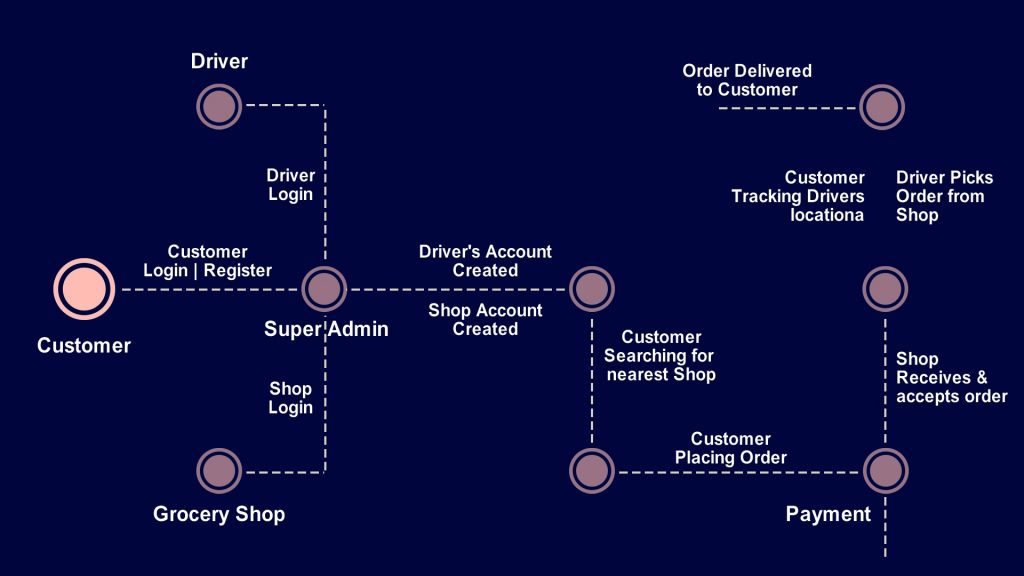


A grocery app is a convenient manner to purchase groceries in your comfort zone. It can save time and effort rather than going to a physical grocery store. It may also provide added features like discounts and customized recommendations.
Following are some details about how a grocery delivery app works:
Registration
Once you download a grocery delivery app, you will commonly be encouraged to register for an account. It commonly provides basic data like name, email address, and phone number. You may be asked to develop a password and verify your account through email or SMS.
Browsing
When you set up the account, you can browse the app’s selection of products. It may consider categories like fresh produce, meat, dairy, and pantry staples. You can commonly search for particular products by name or browse by category.
Adding Items to Your Cart
Once you find the product you want to purchase, you can add it to your virtual shopping cart. You can also commonly adjust the quantity of each item in your cart and remove products if required.
Checkout
After finishing selecting your items, you can proceed to checkout. You will commonly be asked to confirm your delivery address and choose a delivery window for your order. You may be competent to select from distinct payment choices like a mobile wallet or credit card.
Delivery
After confirming the order, the grocery app will commonly offer updates on your delivery. You may be able to track your order in actual time and get reminders while it is on its way.
Order History
Grocery delivery apps let users view their order history and reorder items they purchased in the past few days. It also provides you with customized recommendations according to your past orders.
Why Should You Build A Grocery Delivery App?
You can develop a grocery delivery app to start a new business or to expand the operation of an existing one. Why developing a grocery delivery app is beneficial for you?
Let’s catch out these:-
Convenience
Using the grocery delivery app, customers can order groceries at their convenience and have them directly to their doorsteps. It can be particularly appealing to customers with busy schedules or restricted mobility.
Increased Demand
After the Covid crisis, people are looking for ways to avoid busy shops and focus on the virus. This is making the demand for food delivery services go up.
Competitive Benefits
In your grocery delivery app, you can provide unique services and distinguish your app from competitors. Consequently, it aids in attracting new customers and retaining the existing ones.
Potential for Recurring Revenue
Grocery delivery services can commonly generate recurring revenues because customers place orders regularly. It can offer constant sources for generating revenues.
Data Insights
A grocery delivery app can offer valuable data insights into customer behavior and preferences. It can support you in optimizing product offerings and marketing strategies to meet the customer’s needs effectively.
Overall, developing a grocery delivery app can be a better decision to get a wider range of benefits for you and your customers.
Monetization Models for Grocery Delivery App
Let’s discuss some monetization models you can consider for developing a grocery delivery app.
Commission-based Model
Under this model, you earn a commission as a percentage of the order value on each order placed by your app. This kind of model is highly used by some platforms such as Grubhub and Uber Eats.
Delivery Fee Model
Under this model, you may charge a fee for delivery that can vary according to distance, demand, day, and timing. Different platforms, such as Postmates and Instacart, commonly use such a model.
Subscription-based Model
As per this model, you provide a premium service to customers who pay a subscription fee, such as exclusive discounts, quick delivery, and customized recommendations to customers. This model is highly used by platforms such as Thrive Market and Boxed.
Advertising Model
This model enables you to display the ads on your app and generate revenue from advertisements that wish to reach your customers. It is highly used by platforms such as Walmart Grocery.
Partnership Model
Under this model, you partner with the grocery stores and earn revenue by charging them a fee for product listing on your grocery delivery app. This model is highly used by the platforms such as Peapod and Shipt.
The revenue model you select depends on the target audience, business goals, and market conditions. Hence, conducting market research and comprehending the customer’s needs and wants is significant before choosing a revenue model for your grocery delivery app.
Grocery Delivery App Development Process
The development procedure may vary depending on the project complexities and development team you select. Working closely with your development team and discussing your requirements is important to ensure your grocery delivery app will meet your expectations.
Now let’s follow the step-by-step guide for the grocery delivery app development process.
Conducting Market Research
The first step is all about identifying the app’s objectives and features of your grocery delivery app. It would be best to determine what problem your app will solve, what functionality it will provide, and what target audience it will serve.
Here, you do a market study to find out what your target crowd wants and needs. It will support you in comprehending the competition, assessing the opportunities, and differentiating your grocery delivery app, among others.
Select a Development Team
Select a development team that has experience in developing grocery delivery apps. You can hire an in-house team or outsource the development to a third-party company.
Designing the UI/UX and Prototyping
In this step, you need to ensure the design is simple, user-friendly, and intuitive, enabling users to navigate the app easily. You also required to check that your grocery delivery app is functioning well. It will support you to test the app’s usability and obtain feedback from potential users.
Develop the App
The app must be developed using the programming language and frameworks. You should also test the app at each stage of development, ensuring it functions properly.
Hire app developers to integrate secure payment gateways like social media integration, location-based services, and push notifications, to improve app usability.
Test and Launch of the App
Testing the app thoroughly ensures it is free of bugs and glitches. You can check to automate the testing tools and also manual testing to ensure that the product delivered is flawless and doesn’t dissatisfy you.
After the testing, your grocery delivery app is ready, and you can deploy it on different app stores. Here, it would be best to promote it using different marketing channels.
Maintaining and Updating the App
We understand that technology is evolving; hence, you need to update your app regularly to stick with the competition. Our mobile app developers will surely support you after launching the app, whether related to adding new features or fixing any issues, as per your feedback.



Popular Grocery Delivery Apps
The demand for grocery delivery apps is surging in the market as people don’t want to waste time physically visiting the store. Rather they prefer to shop online.
Although so many grocery delivery apps are flooding the market, choosing the best one is a big dilemma for you. Hence, we have discussed some of the best grocery delivery apps that make you profitable.
Let’s move forward on these apps.
Instacart
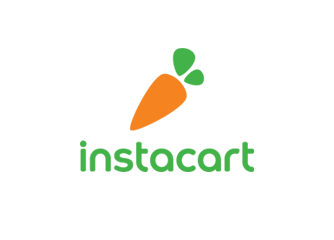


Instacart is one of the best grocery delivery apps that partners with local grocery stores to provide same-day delivery. Customers can choose from a wider category of products and get them delivered to their comfort zone in an hour.
It also provides subscription services known as Instacart Express, which offers free delivery on eligible orders over $35.
Shipt
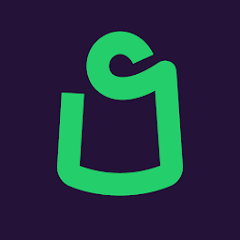


Shipt lets users purchase things from different shoppers on the same platform. You can find the products, deliver them in a minimum of 1 hour, and delay in according to the available store distance.
You can also get a discount and free shipping on a certain purchase amount. The users can change the orders and make changes in orders by SMS, and options are available in the grocery delivery app rather than visiting the physical store.
AmazonFresh
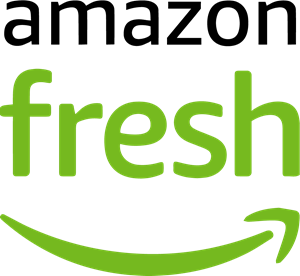


It is an innovative grocery delivery app offered by Amazon as an add-on to the Amazon Prime subscription. If you are an existing Prime member, Amazon Fresh is a sound way to deliver groceries to your doorstep.
AmazonFresh offers its existing and new Prime members the best grocery delivery app services. If you are a prime member, you can get the free services on an order value of $35, but under this value, you must pay an extra shipping cost of $10.
Walmart Grocery
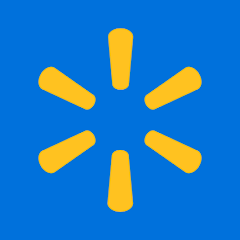


Walmart grocery app is a multinational online retailer in the USA. You can order the products by visiting the websites or downloading the Walmart grocery app.
It provides the option to choose the pickup or delivery location. You can get the range of items that you can find on the app. You can get free delivery services on giving an order of $35, but you may need to pay some amount under this.
Kroger



It is pioneering grocery delivery apps on both platforms, such as iPhone and Android. The Kroger app provides customers with deals, discounts, and other promotional offers and optimizes its ranking in the USA online delivery sector.
Kroger delivers everything from fresh vegetables to personal care products. It allows users to shop online and delivers orders to their doorsteps.
This app facilitates user-friendly features such as secure and convenient in-app payments, an order tracking facility, and an in-app scanning facility.
Grocery Delivery App Development Features
The grocery delivery app market is highly competitive and needs comprehensive market research on the competition strategy. It would aid you in checking their system’s gaps and filling them to provide a sound solution. The features may affect the grocery delivery app development cost.
Four panels may affect the grocery delivery app development cost such as the user panel, admin panel, delivery man panel, and vendor panel.
Grocery App User Panel
The user panel acts as the primary interface for the customers. Let’s discuss some grocery delivery app development features for the user panel.
Registration and Login: Users can get to the app’s features by making an account or logging in. You can sign up using your Google account, social media accounts, or phone number.
Browse and Search: Search for particular grocery items or browse via categories for findings on the product you require.
Product Details: It allows you to access detailed data regarding each product, such as description, price, and images.
Add to cart: You can add their expected items to their shopping cart for easy checkout.
Multiple payment choices: It lets the users select from different payment techniques like digital wallets, credit/debit cards, or cash on delivery (COD).
Order Tracking: Track the order status from placement to delivery by offering real-time tracking details.
Delivery address management: Save different delivery addresses and select the preferred one during checkout.
Ratings and Reviews: You can give feedback and ratings on products and services.
Order History: It is best to check the previous orders and reorder the items easily.
Reminders: It is a great tool to remind you about product confirmation, delivery status updates, and special offers.
Admin Panel
It is intended to handle and oversee the entire grocery delivery process. Let’s dive right into the features of the grocery delivery app for the admin panel.
Dashboard: The admin can access the inclusive dashboards displaying key metrics such as user activity, orders, and sales.
User and vendor management: It manages the user profile, access vendor registrations, and account-related concerns.
Inventory Management: You can add, edit, and delete grocery products, update prices, and manage stock levels.
Order Management: It is a one-stop solution to view and manage orders, handle cancellations and refunds, and update the order status.
Reporting and Analytics: Under this section, you can generate sales reports, user behavior, and recognized products to support you in business analysis and decision-making.
Content Management: Managing the static content like terms & conditions, privacy policy, and FAQs for making the grocery delivery business highly reliable and assured.
Promotions and discounts: It is a new milestone for creating and handling promotional campaigns, special offers, and discount codes.
Notifications: The admin can send important reminders to vendors, users, and delivery personnel about the app policies, updates, or offers.
Deliveryman Panel
This panel is personalized for the delivery personnel. It permits them to receive and manage delivery requests. Here, we will discuss grocery delivery app development features for the deliveryman panel.
Order Acceptance: Drivers can accept and view incoming delivery requests.
Route Optimization: It allows you to update the order status like picked up, en route, and delivered.
Navigation and Directions: Drivers can access the integrated maps and use GPS to navigate the customer’s location.
Communication: Delivery personnel can communicate with their users and support all the staff in case of any queries or concerns.
Payment and earnings details: It showcases the earnings of drivers, access completed deliveries, and access payment descriptions.
Schedule and Availability management: This feature enables you to set their availability, update the working hours, and manage the time-offs or breaks.
Customer Support: Respond to all queries of your clients when managing the other store activities. Hearing them can keep you motivated to drivers for promoting your services.
Vendor Panel
It is intended for the grocery store or individual vendors contributing to the delivery services. Let’s check out the different grocery delivery app development features for vendor panels.
Vendor registration and verification: Vendors can sign-up and undergo a verification procedure before listing their products.
Product Management: This feature allows you to add, edit, and delete grocery products, update prices, and handle stock availability.
Order management: Process and view incoming orders, update the order status and interact with the users or drivers.
Analytics and Sales Report: With this feature, the store owner can access the sales performance, track the performance metrics, and increase insights into their business.
Communication: Vendors can interact with users and supporting staff about order details, availability, and product-related queries.
Push Notification: You may receive notifications regarding new orders, updates, or other significant data.
Offers and Promotions: Store owners can create and handle their offers, discounts, and promotions to influence customers.
Grocery Delivery App Development Cost
It makes sense to look at how different things affect the cost of making an app for shopping delivery. These are the complexity of the app, the amount of specialised platforms, and where the app is being made.
Before examining different factors affecting the grocery delivery app development cost, let’s check out the cost breakdown.
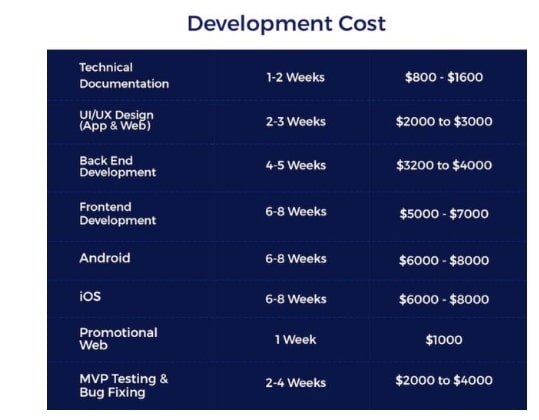


Source: Business of Apps
As we figure out the costs of running the business, we find that developing a shopping delivery app can cost anywhere from $15,000 to $80,000 for a single device like iOS or Android.
As more features are added to the app for food delivery, the price could go up to $50,000.
Factors Affecting the Grocery Delivery App Development Cost
Different things affect how much it costs to make an app for grocery delivery:
App Features and Functionalities
The complexity and number of features you want to consider in your grocery delivery app will highly affect the development cost. For instance, if you plan to consider features such as customized recommendations, real-time tracking delivery, payment gateway integration, and social media integration, developing, testing, and deploying a grocery delivery app will take maximum time and effort. The more features you add to your grocery delivery apps, the cost of development will be.
App Designing
Designing your grocery delivery app is another significant factor affecting its development cost. A well-designed app with attractive graphics, intuitive user interfaces, and easy navigation can improve the user experience and attract many customers.
However, designing an app using these features can be costly, specifically when you hire a professional app designer or UI/UX experts.
Development Platform
The development platform you select can also impact the development cost of your grocery delivery apps. Developing a grocery delivery app using iOS and Android can be highly expensive compared to single platforms. It is because each platform has its own design and development guidelines that need specialized knowledge and expertise.
Development Team
The cost of development will rely on the development team you select. Hiring an in-house team will be highly expensive compared to outsourcing the development to a third-party company. But an in-house team can give you better control over the grocery delivery app development process and ensure the application’s timely delivery.
Location
How much it costs to make an app for grocery delivery depends on where the development team is. Developing a grocery delivery app costs require different amounts in different places.
Here are some of those costs: Developers in Eastern Europe charge between $30 and $150 per hour. Developers in the US charge between $50 and $250 per hour. Developers in India charge between $20 and $80 per hour.
App Security
Security is significant for any app that manages financial transactions. Implementing robust security measures like two-factor authentication, SSL certifications, and secure payment gateway integration will increase the grocery delivery app development cost. But, investing in app security is vital for protecting the user’s data and developing trust in your app.
App Maintenance
The app development cost is not just limited to the initial development stage. You must regularly maintain and update the data and ensure it functions properly. You also need to add new features according to the user feedback. This ongoing cost must be factored into the overall cost of creating a grocery delivery app.
Depending on many different things, the cost of making an app that delivers groceries can change by a lot. Considering such factors and hiring a grocery delivery app development company is significant to get a high-quality app within your budget.
Technology Stack to Consider for Grocery Delivery App Development
The tech stack is used for developing a grocery delivery app. However, it may vary based on elements such as app platforms, type of app, third-party integration, etc.
Let’s explore some tech stacks you must consider in developing a grocery delivery app.
Programming Language
The programming language selection will rely on the platform you select to develop a grocery delivery app. For iOS, you may consider Objective-C and Shift, as these are highly renowned programming languages. Java and Kotlin are used for developing an app on an Android platform.
Mobile App Development Framework
Using the different mobile app development frameworks, you can speed up the development process and reduce the development cost. Some of the best frameworks are Flutter, React Native, and Ionic.
Backend Development
You can consider server-side programming languages, such as Ruby, Python, or Ruby, for backend app development. Some cloud-based platforms such as AWS or Google Cloud platform may be used to host the app’s backend.
Database Management
You can use relational database management systems such as MySQL, PostgreSQL, AND Oracle to store and manage your app’s data. Some NoSQL databases, such as Cassandra or MongoDB, can be used if your app needs to handle more unstructured data.
Payment Gateway Integration
Integrating the payment gateways aids you in handling the financial transactions of the grocery delivery app. Some of the best payment gateway providers are Stripe, PayPal, and Braintree.
Push Notification Services
It is a better way to engage the users and keep them informed about new offers and promotions. You can use push notification services such as Amazon SNS and Cloud messaging to remind your app users.
Location-based Services
This tech stack is essential for developing a grocery delivery app as it offers actual time data about delivery status and estimated delivery timing. Some location-based services are Mapbox or Google Maps, which integrates to get actual-time location tracking in your grocery delivery app.
Overall, it would be best if you considered these essential tech stacks for grocery delivery app development. The selection of the tech stack will rely on the target audience, the app’s requirements, and the budget.
It is significant to select the best grocery delivery app development company with a better experience using this stack, as it will aid you in getting a high-quality app within your estimated budget.
How eBizneeds Can Help You in Grocery App Development?
If you are looking for a grocery delivery app development company to move your grocery business digitally, you are in the right place.
Hire mobile app developers from eBizneeds to get customized solutions for developing the grocery delivery app per your requirements. At eBizneeds, we have several happy clients assisted by a team of professional developers, and we assure you that get the best services. For any doubt, you can contact us and contact our 24*7 customer support.
Key Takeaways
Developing a grocery delivery app can be a highly productive business opportunity. However, it is significant to comprehend the cost and features involved before diving in. Businesses must cautiously consider the features they wish to consider in their app and the development platform they select.
At the same time, the grocery app development cost can be highly significant as it is vital for providing a better user experience that meets the customer’s requirements. By completing this, businesses can develop a loyal customer base and attain long-term success in a competitive environment of online grocery delivery.
FAQs
How much cost do you require to create a grocery delivery app?
The cost of making an app for shopping delivery can change based on things like app design, app features and functionalities, development team, development security, app maintenance, location, and app complexities. On average, it can cost anywhere between $50,000 to $150,000.
What features must you consider in a grocery delivery app?
A grocery delivery app must have significant features such as a shopping cart, product listings, payment gateway integration, delivery tracking, and order tracking. Additional features such as social media integration, user reviews, customized recommendations, and ratings can improve the user experience.
How long does it take to make an app that delivers groceries?
The time it takes to make an app for food delivery can change based on how complicated the app is and how much the team knows. Developing a best-quality grocery delivery app can take anywhere between 6 to 12 months or more.
Should I hire an in-house team or outsource the development of my grocery app?
The development team selection will rely on your budget and requirements. Hiring an in-house team can offer you better control over the development procedure, but it can be expensive. Outsourcing the development to a third-party company can be highly cost-effective, but you need to ensure that the development team has the required expertise and experience.
How can I ensure the security of my grocery delivery app?
Using effective security methods like SSL encryption, two-factor login, and safe payment gateway connections. It can ensure the security of your grocery delivery app. You can also conduct regular security audits and updates to protect the app against potential security threats.
How can I monetize my grocery delivery app?
You can monetize your grocery delivery app by charging the commission on each transaction, providing subscription-based services, and displaying advertisements. You can also partner with local grocery delivery stores and charge the commission on each sale the app makes.



Naveen Khanna is the CEO of eBizneeds, a company renowned for its software development and IT Consulting services. By delivering high-end modern solutions all over the globe, Naveen takes pleasure in sharing his rich experiences and views on emerging technological trends. He has worked in many domains, from education, entertainment, banking, manufacturing, healthcare, and real estate, sharing rich experience in delivering innovative solutions.






